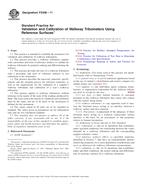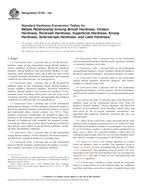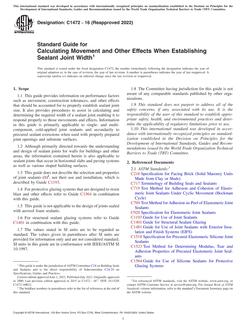1.1 This guide offers direction and guidance to the user concerning available techniques and methods for design, material selection, fabrication, erection, inspection, confirmatory testing, quality control and assurance.
1.2 These minimum guidelines, when properly used and implemented, can help ensure a safe and reliable structure for the industry.
1.3 This guide offers minimum requirements for the proper design of a FRP liner once the service conditions relative to thermal, chemical, and erosive environments are defined. Due to the variability in liner height, diameter, and the environment, each liner must be designed and detailed individually.
1.4 Selection of the necessary resins and reinforcements, composition of the laminate, and proper testing methods are offered.
1.5 Once the material is selected and the liner designed, procedures for proper fabrication of the liner are developed.
1.6 Field erection, sequence of construction, proper field-joint preparation, and alignment are reviewed.
1.7 Quality control and assurance procedures are developed for the design, fabrication, and erection phases. The quality-assurance program defines the proper authority and responsibility, control of design, material, fabrication and erection, inspection procedures, tolerances, and conformity to standards. The quality-control procedures provide the steps required to implement the quality-assurance program.
1.8 Appendix X1 includes research and development subjects to further support recommendations of this guide.
1.9 Disclaimer – The reader is cautioned that independent professional judgment must be exercised when data or recommendations set forth in this guide are applied. The publication of the material contained herein is not intended as a representation or warranty on the part of ASTM that this information is suitable for general or particular use, or freedom from infringement of any patent or patents. Anyone making use of this information assumes all liability arising from such use. The design of structures is within the scope of expertise of a licensed architect, structural engineer, or other licensed professional for the application of principles to a particular structure.
Note 1 – There is no known ISO equivalent to this standard.
1.10 The values stated in inch-pound units are to be regarded as standard. The values given in parentheses are mathematical conversions to SI units that are provided for information only and are not considered standard.
1.11 This standard does not purport to address all of the safety concerns, if any, associated with its use. It is the responsibility of the user of this standard to establish appropriate safety and health practices and determine the applicability of regulatory limitations prior to use.
Product Details
- Published:
- 11/01/2008
- Number of Pages:
- 25
- File Size:
- 1 file , 330 KB


